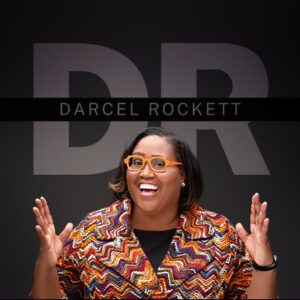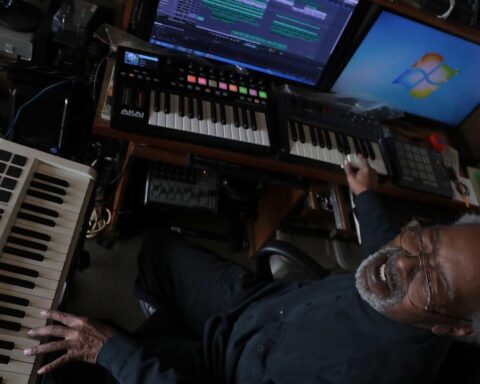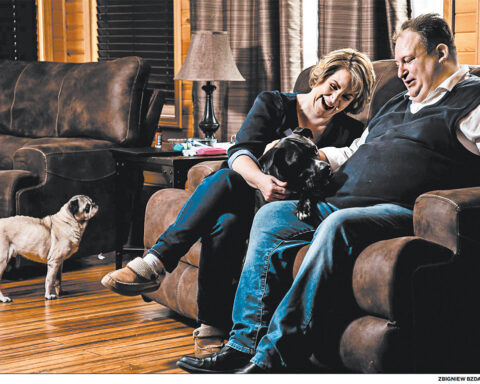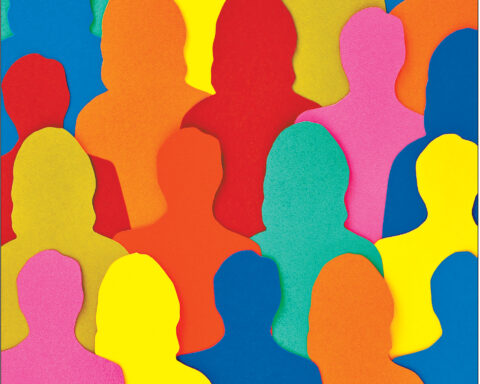Jane Willenbring’s opening salvo in the documentary “Picture a Scientist” is one that still brings tears to her eyes. The geomorphologist recalls taking her daughter to work one day and the 3-year-old saying she wanted to be a scientist just like her mom.

“That was the horrible, sort of lose-it, triggering moment that I ever had. I actually started crying at the time,” said the director of Stanford University’s Cosmogenic Isotope Laboratory. “She’s 3. So, she doesn’t understand why I’m crying. So, I told her they were happy tears. But they weren’t just happy tears. I was thinking about someone treating her like trash in 20 years, like I had been treated like trash.”
Over the course of an hour and 37 minutes, viewers learn details of several women scientists’ career experiences. Amid the ongoing struggle to stay in their field despite overt and subtle harassment, racism and institutional bias, each scientist in the 2020 film is trying to “make the whole enterprise something that is welcoming to women.”
A 2016 harassment complaint filed by Willenbring against her graduate adviser at Boston University resulted in a finding that David Marchant had sexually harassed her at a field camp in Antarctica, and the harassment created “a hostile learning and living environment at the camp.” Marchant was fired.

Nancy Hopkins is known for her work promoting equality of opportunity for women scientists in academia. In the film, she describes an encounter with a male scientist and inappropriate touching. Another scientist in the film is University of Illinois at Urbana-Champaign biological anthropologist Kathryn Clancy, whose work intersects with feminism and sexual harassment of women in science, technology, engineering and math.
According to the documentary’s co-directors, Ian Cheney and Sharon Shattuck, blatant harassment like sexual coercion, come-ons and assault make up about 10% of the harassment that women face in the workplace. The other 90% comes from subtle slights like insults and exclusion. But in the long term, those subtler slights can be just as damaging to a woman’s career.
Kawtar Hafidi, associate laboratory director for physical sciences and engineering at Argonne National Laboratory, understands this. She said nothing surprised her in the documentary. The nuclear physicist moderated a panel discussion Nov. 18, after the film was screened by the Chicago Council on Science and Technology (C2ST), a nonprofit with a mission of enhancing the public’s understanding and appreciation of science and technology.
“I am glad that the movie was made, because among ourselves, we know this is not news,” she said. “You would think scientists are smart—smart and dedicating their life for something noble. How can someone be that horrible and racist and narrow-minded? I believe science makes us better human beings. We do it because we believe it’s worth it, and it should be the part of the scientist or engineer personality to fight for the right thing.”
Wellesley College President Paula Johnson says institutions like hers have been working to keep women flowing into STEM fields, but more work needs to be done. Hafidi said the work is slow and painful.
Social psychologist Corinne Moss-Racusin, an associate professor at Skidmore College, showed in a 2012 study that STEM faculty members who reviewed applications for a lab manager position favored applicants named John over otherwise identical applicants named Jennifer. Data analysis revealed gender bias against the female student who was rated as less competent, less likely to be hired for a lab manager job and mentored by a faculty member, and given a lower starting salary than an identical male student.
In the documentary, she went further and said, “Women of color are targeted in ways that are more complex, more insidious and just more common.”
“Really well-intentioned folks tend to display these sorts of very pervasive biases,” she said. “It’s not sort of an evil cartoon of someone whose delighting in thwarting the progress of smart women; it’s all of us.”
“For men, when they are strong like us, they are called leaders. We are called emotionally unstable,” Hafidi said. “You see the same behavior, the same strength is looked at in one way in the men, and for women, it’s completely different.”
Hafidi has been with Argonne for 22 years. She said she remembers being the only woman scientist in her physics division for over 10 years. Hafidi said she has spent many years trying to change the culture surrounding science and women, and received awards for advocacy for increased diversity.
“You can hire people, but if it’s not an inclusive environment, they will leave,” Hafidi said. “In physics, the average age is very high. People can stay into their 80s. So, you can imagine that the culture and role models are all white men, people who got their Ph.D.s in the ’50s and ’60s. And they set the culture.”
Hafidi said more brave individuals need to be committed to making a stand against bias, systemic racism and sexual harassment. To change the scientific landscape, strong leadership and allyship with white people who believe in making a change are necessary too. Hafidi, a native of Morocco, said that even though the film is about women in science, the dynamics of the current culture touch everyone, men included.
“My scientific degree, my career dream is important,” she said. “However, if I care about science, I need to clean up where I work. It is a fight worth fighting. Don’t be afraid.”
C2ST wants to be a resource for change.
“I’m hoping all of this coming to the forefront—trying to be more aware of privilege in all shapes and forms—that there’s more conversations and awareness,” said C2ST’s program manager Dawnne LePretre. “I’m hoping all of this becomes a movement and not just a moment in time. I have faith that the next generation is going to help break some of these barriers.”
People can host a screening of “Picture a Scientist” or watch it on broadcast/streaming platforms in the spring.







